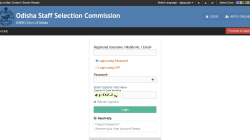Nepal, June 3 — Many people in Nepal continue to die from preventable causes, especially in rural areas. The country boasts more than 3,800 health posts at various local levels as “the first institutional contact point for service delivery.” Yet these institutions lack not only quality healthcare facilities and professionals but also fail to launch basic awareness programmes. Moreover, district-level hospitals are still far from reach of many, let alone advanced hospitals in the federal capital.
One issue that has long persisted in rural areas but is largely overlooked-even as it takes a toll on dozens of people each year-is the consumption of wild mushrooms. Experts warn the number of poisonings and deaths could be higher than reported. The cases increase during the monsoon season, as pre-monsoon rains create a favourable environment for wild mushrooms to grow. Especially those from poor families, who otherwise cannot afford a single meal a day, often turn to wild mushrooms, unaware that they may be ingesting poison. This year, even before the onset of monsoon, two young girls from a village in Ward 5 of Mangsebung Rural Municipality in Ilam district died after consuming poisonous mushrooms.
Studies show Nepal is home to over 1,200 species of wild mushrooms, of which over 100 are deadly. But people cannot differentiate what is edible and what is not. Once ingested, you can suffer from abdominal pain, vomiting, diarrhoea and seizures. Other adverse effects include hallucinations and renal failure. In severe cases, liver failure leads to death. With the odds of falling seriously ill or dying from inedible mushrooms being nearly 50 percent, those who don’t receive timely and quality care are likely to die. Unfortunately, our health posts are ill equipped to deal with mushroom poisoning, and they must be referred to hospitals with advanced facilities in urban areas.
Local governments and health posts must shoulder the responsibility of warning people about the deadly mushrooms. But awareness programmes are few and far between. People believe that after boiling and cooking properly, mushrooms become edible. But this is a dangerous misconception, as toxins in such fungi are heat-resistant, meaning they don’t neutralise even after cooking. Plus, mushroom species previously considered edible could become deadly later, as they absorb poisonous elements such as hydrocarbons, mercury and lead from contaminated soil. Our health care system thus neglects the poisoning from wild mushrooms, even as it affects many.
This raises the question: Why consider health posts as the first point for service delivery if they are not equipped with essential services? These facilities should at least be able to address the rampant healthcare problems in local communities. In areas where mushroom poisoning is rife, the capacity of such health institutions must be improved by investing in financial and human resources to treat such cases.
The same applies to pregnancy-related complications, food poisoning, diarrhoea and other communicable diseases that afflict rural communities. Nepal cannot reach significant milestones in health by neglecting quality care, infection prevention and awareness programmes at the grassroots. Health posts and primary health centres, which are closest to people, must be strengthened to serve their intended purpose. Otherwise, in many cases, by creating a false sense of security, they may do more harm than good.







